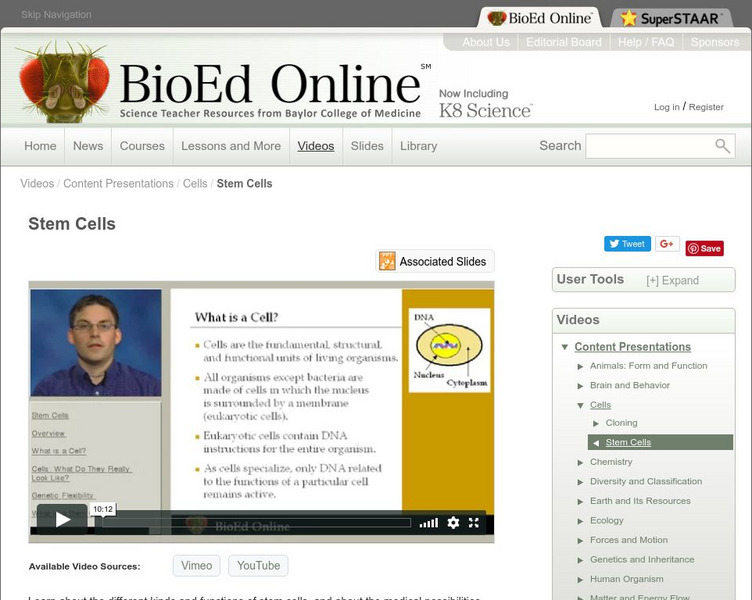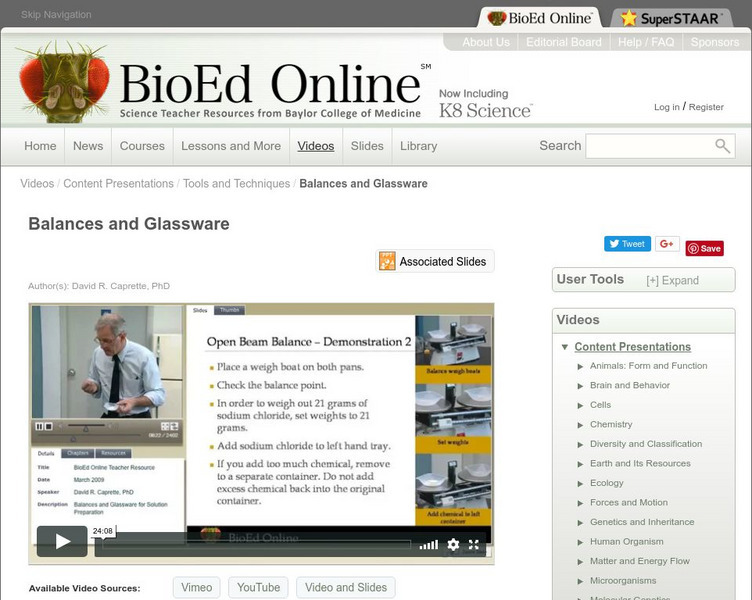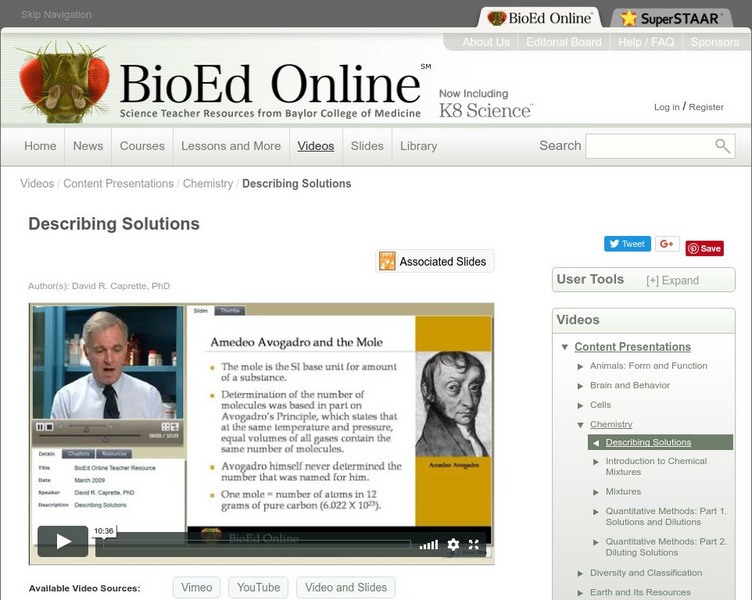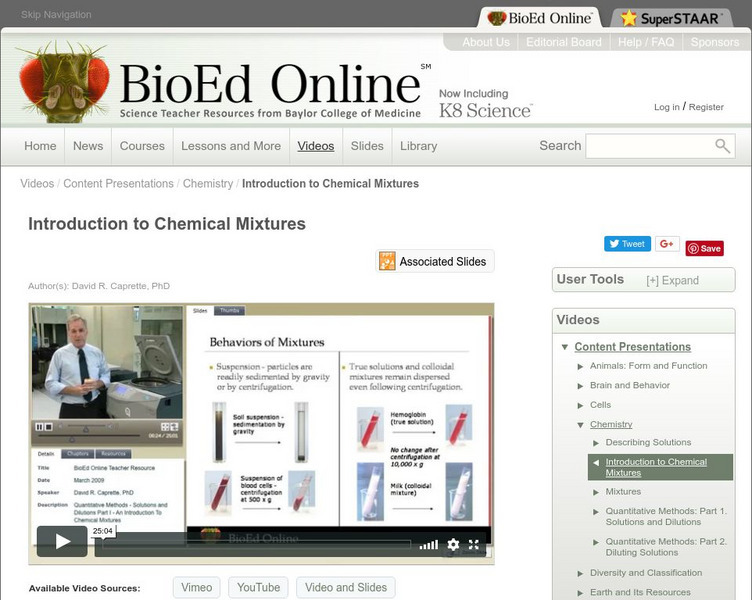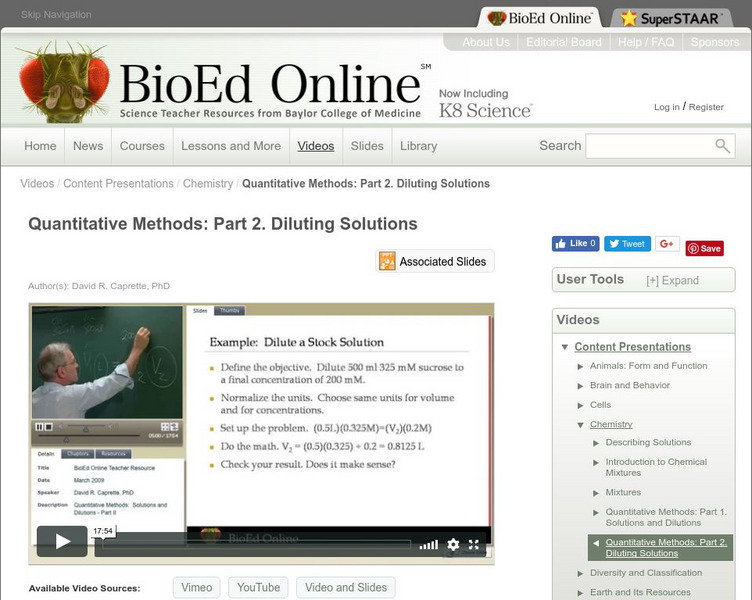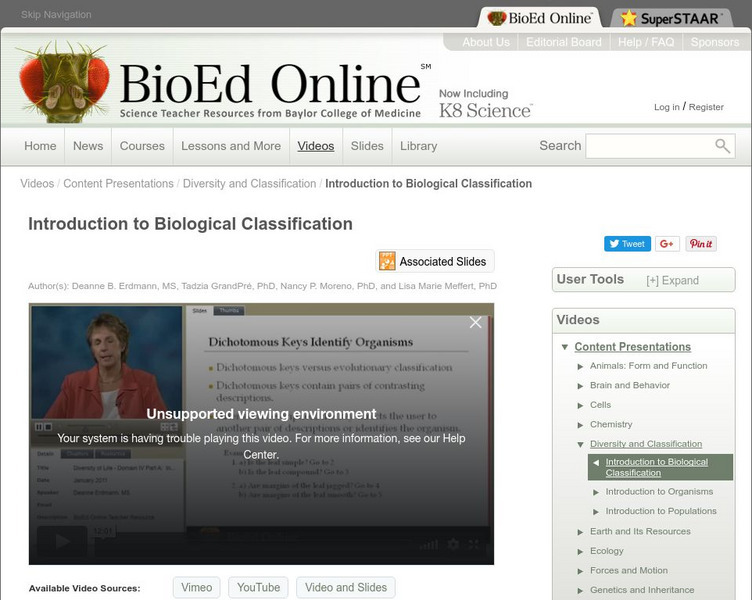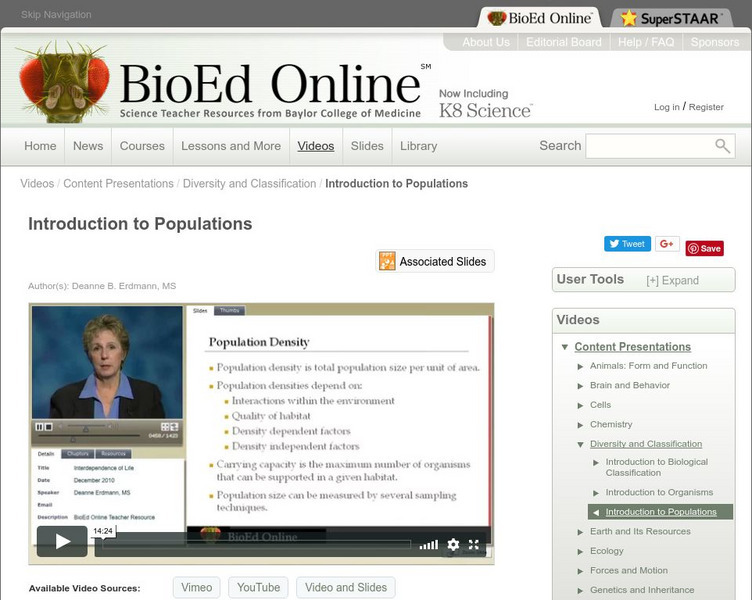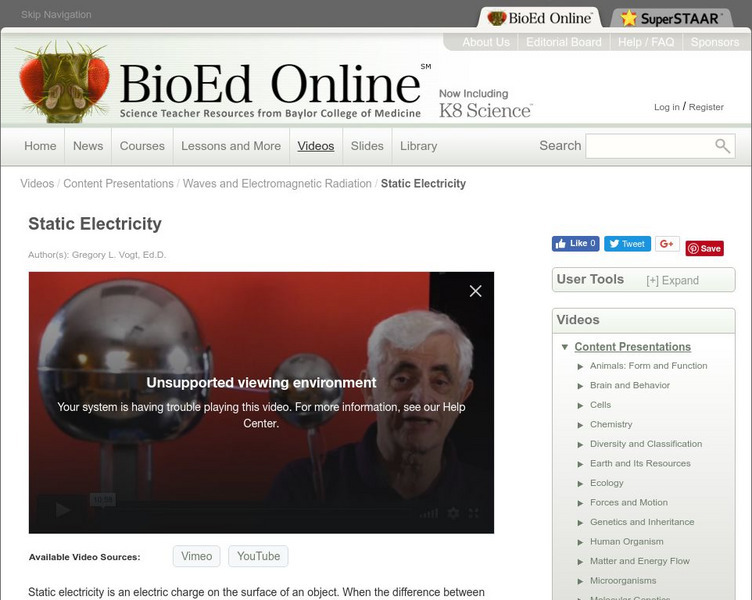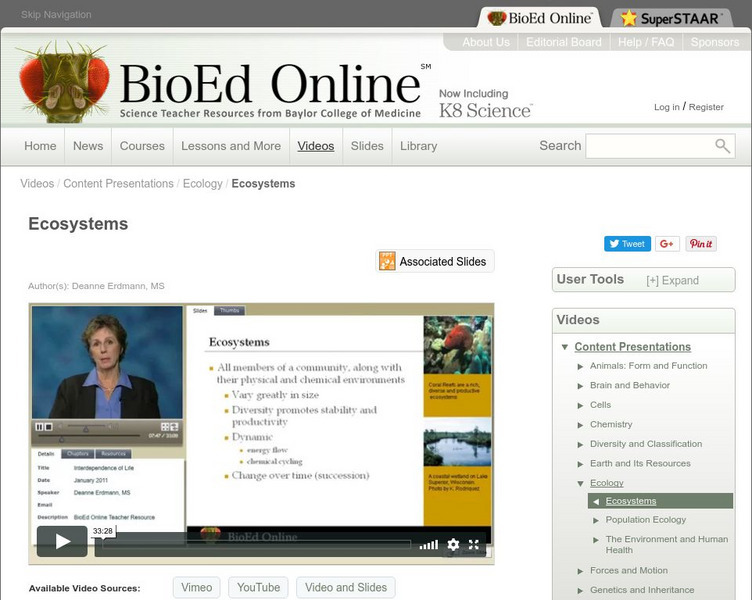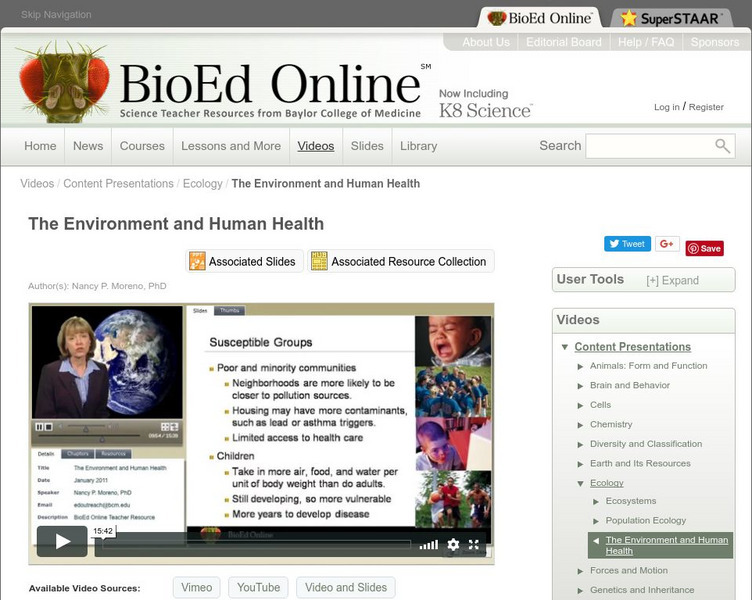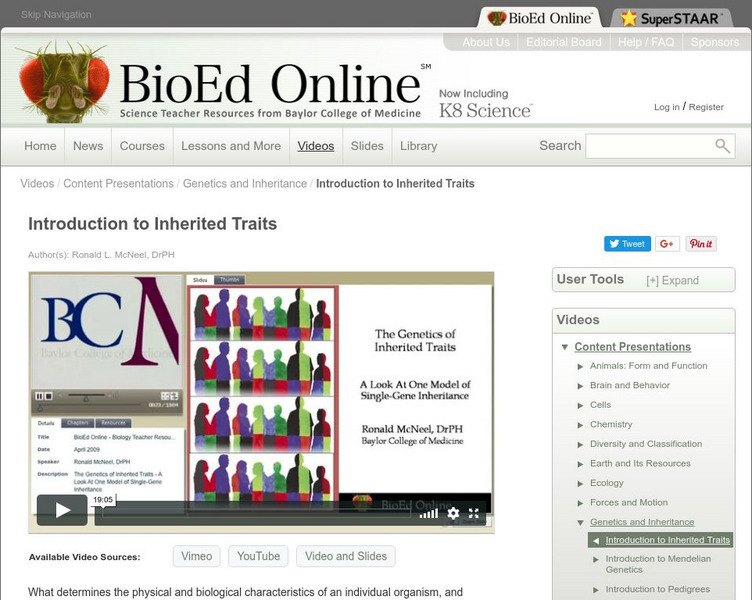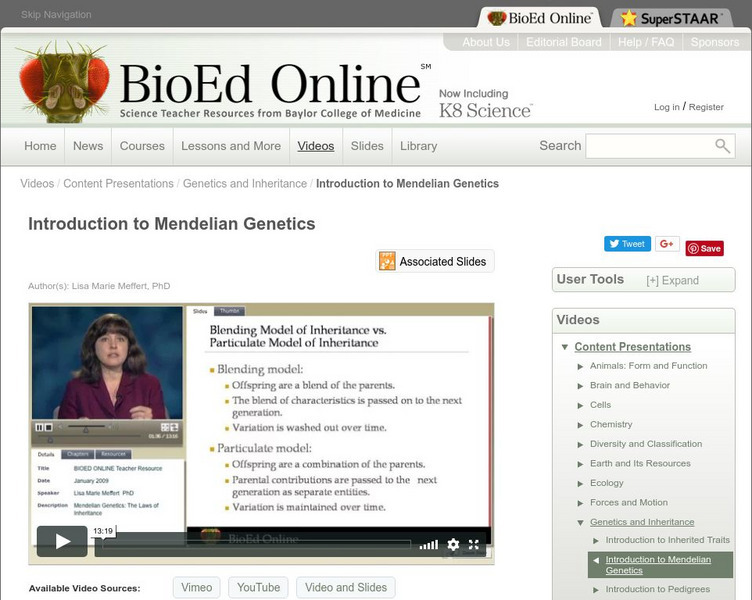Hi, what do you want to do?
BioEd Online
Learning and Memory
Why is it that you can remember your childhood best friend's phone number, but not what you had for dinner last night? It is all in how memories are stored, in either short term memory or long term memory. In part five of six lessons...
BioEd Online
A Most Complex System
How complex is the brain? With over 10 billion neurons, each connecting with thousands of other neurons, even one small change to the brain can alter someone's beliefs, abilities, memories, and countless other characteristics. But how do...
BioEd Online
Sensing the World
The human brain is a magnificent specimen. In the video series Your Brain is You, Dr. David Eagleman discusses what the brain is, its functions, and what makes it so unique. In the episode, Eagleman explains how the brain interprets...
BioEd Online
Neuron to Neuron
What is a neuron? How do brain cells communicate with one another? Are there other types of brain cells besides neurons? In the third of six videos about the brain, Dr. David Eagleman takes a closer look at neurons and their functions....
BioEd Online
Bio Ed Online: Power Play!
This video introduces a set of lessons in physical activity based on an exhibition at the Children's Museum of Houston. The lessons can be adapted and can provide inspiration to help kids be physically active. The complete teacher's...
BioEd Online
Bio Ed Online: Scientific Decision Making; A Case Based Approach
This video introduces a unit on scientific decision-making using cases involving cardiovascular health. Students learn how to logically arrive at a decision in an organized way. A teacher's guide, slides, and individual lessons can be...
BioEd Online
Bio Ed Online: Stem Cells
In this video students will learn about the different kinds and functions of stem cells, and about the medical possibilities and controversies surrounding stem cell research. [10:12]
BioEd Online
Bio Ed Online: Balances and Glassware
This video and slideshow provides an overview and demonstration of the balances and glassware commonly used to prepare solutions in a laboratory. [24.08]
BioEd Online
Bio Ed Online: Describing Solutions
Most scientists use a common language of measurement, called the International System of Units, that is recognized in labs all over the world. In thie following video David Caprette, PhD, explains this language and its well-established...
BioEd Online
Bio Ed Online: Introduction to Chemical Mixtures
A biologist must be able to work with and understand a variety of mixtures. In the following video David Caprette, PhD, describes types of mixtures, and their properties, that might be encountered in a biological laboratory, and...
BioEd Online
Bio Ed Online: Quantitative Methods: Part 1. Solutions and Dilutions
In this video David Caprette, PhD, discusses the types and properties of mixtures prepared and/or encountered in a biological laboratory. He also introduces basic lab equipment, terms and concepts related to formulas, and the concept of...
BioEd Online
Bio Ed Online: Quantitative Methods: Part 2. Diluting Solutions
Many students panic when they must dilute something, but it is relatively easy to work out dilution problems once a solid frame of reference is established. In the following video David Caprette, PhD, explains the process, step by step,...
BioEd Online
Bio Ed Online: Science Concepts Explained
The following videos explore fundamental science concepts, explained quickly in a fun and entertaining way. Topics include density, flotation, mass, mixtures and states of matter.
BioEd Online
Bio Ed Online: Using a Micropipettor
The following video provides an overview of the parts and use of a micropipettor. [11:18]
BioEd Online
Bio Ed Online: Introduction to Biological Classification
In the following video you will learn how classification is a continually evolving scientific effort to group organisms based on knowledge gathered from different fields. You will also learn how it helps to define the relationships among...
BioEd Online
Bio Ed Online: Introduction to Organisms
Organisms are divided into each of five kingdoms based on defining characteristics. Learn about the classification kingdoms and the placement of organisms within them. [1:14:02]
BioEd Online
Bio Ed Online: Introduction to Populations
What are the characteristics that define populations? What causes populations to grow or decline? In the following video you will learn how a population is a group of individuals of the same species living within a designated area at one...
BioEd Online
Bio Ed Online: Physical Science of Water
Water is unique among all liquids. In the following video David Caprette, PhD, discusses its remarkable properties and describes experiments to conduct with this common, crucial substance. [29:36]
BioEd Online
Bio Ed Online: Static Electricity
Static electricity is an electric charge on the surface of an object. When the difference between the charge on the object and the charge on a nearby object becomes great enough, a spark of electric current leaps between them. Learn...
BioEd Online
Bio Ed Online: Ecosystems
Ecosystems are composed of all interacting organisms (biota) along with their physical and chemical environments. Physical aspects of an ecosystem, called abiotic components, include variables related to temperature, sunlight, soil, and...
BioEd Online
Bio Ed Online: Population Ecology
In the following video, Evan Seimann, PhD, defines key terms and concepts of ecology, basic characteristics of populations, population age structures and densities, and explains the dynamics of growth models within a population. [22:59]
BioEd Online
Bio Ed Online:the Environment and Human Health
In the following video students will learn how the environment impacts human health and the ecosystems around us, on both a small/local and large/global scale. [15:42]
BioEd Online
Bio Ed Online: Introduction to Inherited Traits
In the attached slideshow/video you will learn about the basics of genetic inheritance. Learn what determines the physical and biological characteristics of an individual organism, and how these traits are passed from one generation to...
BioEd Online
Bio Ed Online: Introduction to Mendelian Genetics
Mendel used experimental approaches to characterize a particulate model of inheritance. In doing so, he developed the three Laws of Inheritance. In this video/slideshow students will examine how Mendel made his important discoveries....











